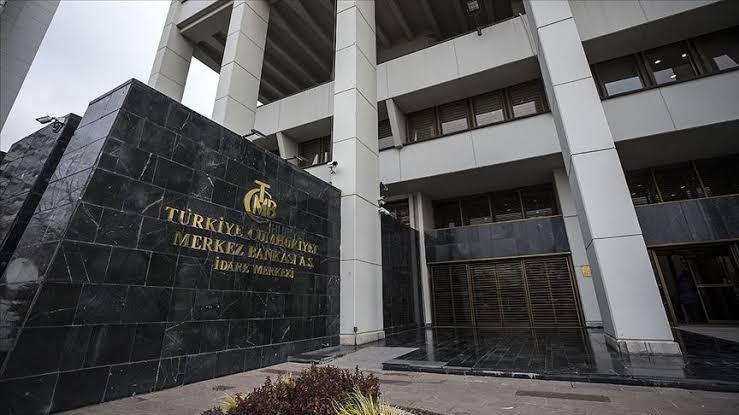China-Taiwan: Chip and Trade Routes / Haberin Peşinde Urfa
Before and during World War II, Taiwan was part of Japan. However, after their defeat in 1945, the island was ceded to the Republic of China.
What is the historical background of the tensions between Taiwan and China? Before and during World War II, Taiwan was part of Japan. However, after their defeat in 1945, the island was ceded to the Republic of China. However, a civil war broke out in mainland China between nationalist government forces led by Chiang Kai-shek and Mao Zedong’s Communist Party.
The communists won in 1949 and took control of Beijing.
Chiang Kai-shek and what was left of the nationalist party – known as the Kuomintang (KMT) – fled to Taiwan where they ruled for the next few decades.
The Kuomintang has since become one of Taiwan’s foremost political parties – leading the island for a significant part of its history.
Currently, only 13 countries (plus the Vatican) recognize Taiwan as a sovereign country.
China is putting significant diplomatic pressure on other countries not to recognize Taiwan or do anything that implies recognition.
In an open conflict, some western experts speculate that Taiwan could best aim to slow a Chinese attack, prevent Chinese amphibious forces from landing on shore, and launch guerrilla attacks while awaiting outside help.
This aid could come from the United States, which sells weapons to Taiwan.
Until now, Washington’s policy of “strategic uncertainty” has meant that the United States was deliberately uncertain about how to defend or protect Taiwan in the event of an attack.
Diplomatically, the US adheres to the “One China” policy, which currently only recognizes one Chinese government – in Beijing – and has official ties to China rather than Taiwan.
But in May, US president Joe Biden appeared to have hardened Washington’s stance.
When asked if the US would defend Taiwan militarily, Biden replied “Yes”.
The White House insisted that Washington did not change its stance.
What is Taiwan’s importance for the world economy? Taiwan’s initial industrialization was fueled by the growth of textile mills and companies producing lightweight products such as small appliances, shoes, and sporting goods. The companies then moved on to the production of semiconductors and electronic equipment, including radios, televisions, and computers. By the mid-1980s, Taiwan had become one of the world’s largest manufacturers of computers and computer peripherals. It also succeeded in establishing steel and shipbuilding industries, but these were less important than businesses producing information and communication technology (ICT) products. One reason given for this situation is that Taiwan’s economy relies primarily on small and medium-sized companies rather than large conglomerates – as in Japan and South Korea.
According to the World Trade Organization, Taiwan was the 15th largest exporter of goods and the 18th largest importer of goods in 2020. It was also one of the largest foreign exchange reserves holders as of December 2020. Taiwan’s per capita gross domestic product reached US$28,371 in 2020. In terms of nominal GDP, Taiwan is close to Switzerland and Poland, while its GDP per capita expressed in purchasing power parity is similar to Iceland and Sweden.

Taiwan trade and investment profile. Source: Taiwan.gov.tw
The share of countries and Taiwanese companies in chip production.

Global market share by country and company 2021. Taiwan dominates global production of computer chips. Source: Trendforce 2021, BBC
China’s takeover of Taiwan could give Beijing some control over one of the world’s most important industries.
World trade routes and their share in total trade.

Key Waterway. Taiwan Strait served 88% of largest container ships in 2022. Source: Bloomberg, CARTO, Mapbox, OpenStreetMap
In 2021, global trade totaled $28.5 trillion. In the same year, Taiwan saw approximately $828 billion, or 2.91% of global trade volume. For global trade as a whole; Taiwan is a top player in the world’s information and communication technology industry, as well as a major supplier of goods across the industrial spectrum.
What is the US doing for chip production? In July 2022, President Joe Biden prepared to sign a bipartisan bill to invest billions of dollars in domestic semiconductor manufacturing and science research to increase the U.S.’s competitiveness with China and other foreign competitors.
Called the Chips and Science Act, the bill includes more than $52 billion in tax credits for US companies that manufacture computer chips and billions more to encourage investment in chip manufacturing. It also provides tens of billions of dollars to fund scientific research and development and encourage innovation and development of other US technologies.
In early August, the House and Senate passed the bill with almost unanimous Democratic support. One-third of Republican senators supported the bill, including Kentucky Senate Minority Leader Mitch McConnell. Two dozen House Republicans also voted for it, but others withdrew their support on the eve of the final vote after Senate Democrats announced their plans to swiftly pass an unrelated partisan compromise bill.
During the Covid-19 pandemic, the chips were in short supply. Factory closures at the start of the epidemic halted chip production in Asia, while consumer demand for cars and upgraded home electronics that needed chips rose during the lockdowns. The US’s share in global chip production has also fallen sharply in recent years, while China and other countries have invested heavily in the industry.
The US manufactures some of the most advanced types of semiconductors, largely made in Taiwan. Pelosi and a delegation of five Democratic Houses traveled to this island, a source of significant tensions with China, as part of a tour of Asia in early August.
What will be the consequences of this tension? In August after Pelosi’s visit, China conducted several military exercises surrounding Taiwan. These exercises and military strategy were very similar to Russia’s pre-invasion exercises in Ukraine. Fortunately, China has not yet invaded Taiwan, but considering the geopolitical tensions and alliances that are beginning to form between Russia-China-North Korea and NATO-US-Taiwan, we can conclude that the invasion is only a matter of time. The United States will help Taiwan defend its shores, now more important than ever.
As we can see, if China manages to take over Taiwan, it will control more than 70% of the global chip market and fully control the strait separating both, used by 88% of the largest container ships. If the chip market falls under Chinese control, it could be a real disaster for the western world. Since every weapon system (and others) requires these technologies, it will provide China with strategic advantages that should not be ignored.
In the event of a war, we can speak of a third world war or a second cold war (which as of today is complex to predict). However, it is certain that the war is in the preparation phase and sooner or later there is a trend towards the start phase. This subject of war will cause a radical change in the world organization and economy. As it begins to emerge, authoritarian countries seem to be allying with each other in the face of western countries and their democracies.
Military strengths are more or less similar and the winner is hard to predict. In the best-case scenario, the eastern world and their authoritarian regimes will collapse and be replaced by democracies, potentially strengthening the global economic relationship and trade between the West and the East and potentially forming a worldwide coalition.
If a “If it goes to ‘World War 3’, we could really see Putin or Kim Jong Un pushing the red button in an eventual losing scenario (some experts estimate human loss to be around 5 billion if it goes nuclear). Let’s hope this doesn’t happen.
What is certain is that we cannot predict the outcome, and because of this situation, we will experience fundamental changes in what the world will be like in the years ahead, whatever the outcome.
Conclusion? The US is no longer the main power driving the chip market, and Taiwan is the world’s largest chip maker. Today, chip production is at the center of computer, smart phone, automobile and all kinds of electrical/electronic production. So a Chinese invasion or blockade (which is much more likely, navigating the island of Taiwan with warships and planes or occupying several small interconnected islands) will hit both production and logistics. The US cannot allow such a large chip market to fall into the hands of China.
Kaynak: Tera Yatırım-Enver Erkan
Hibya Haber Ajansı











